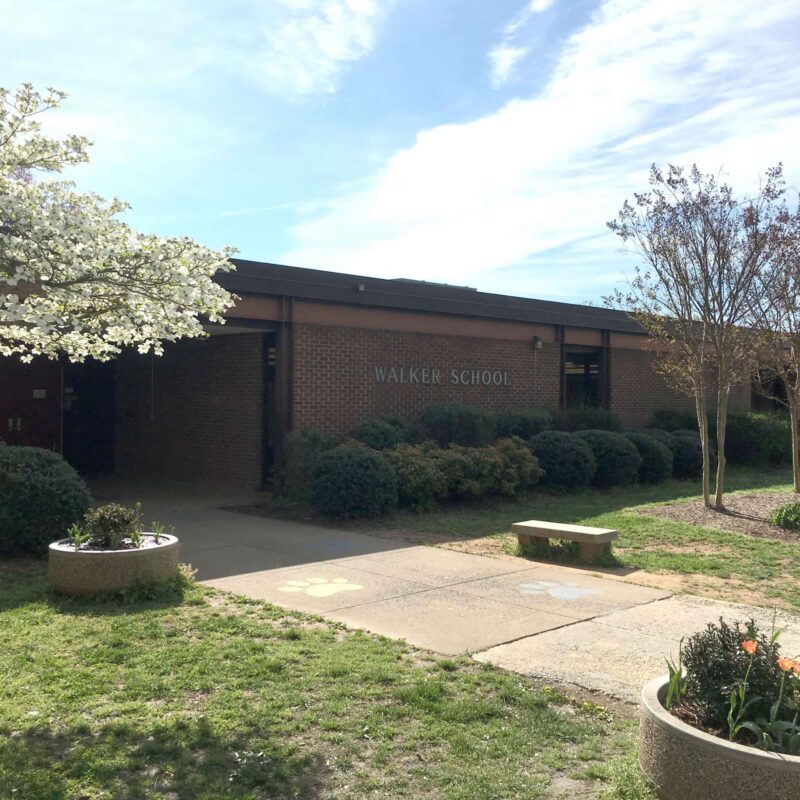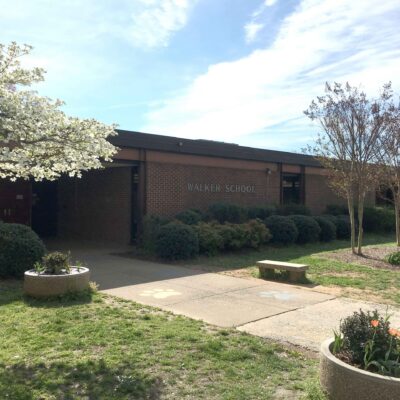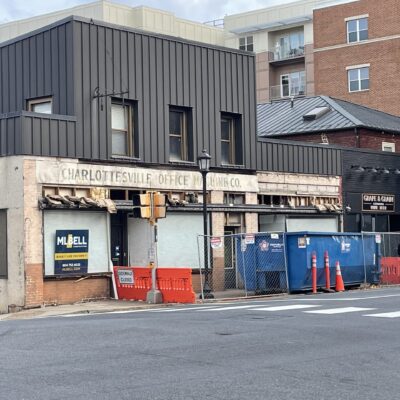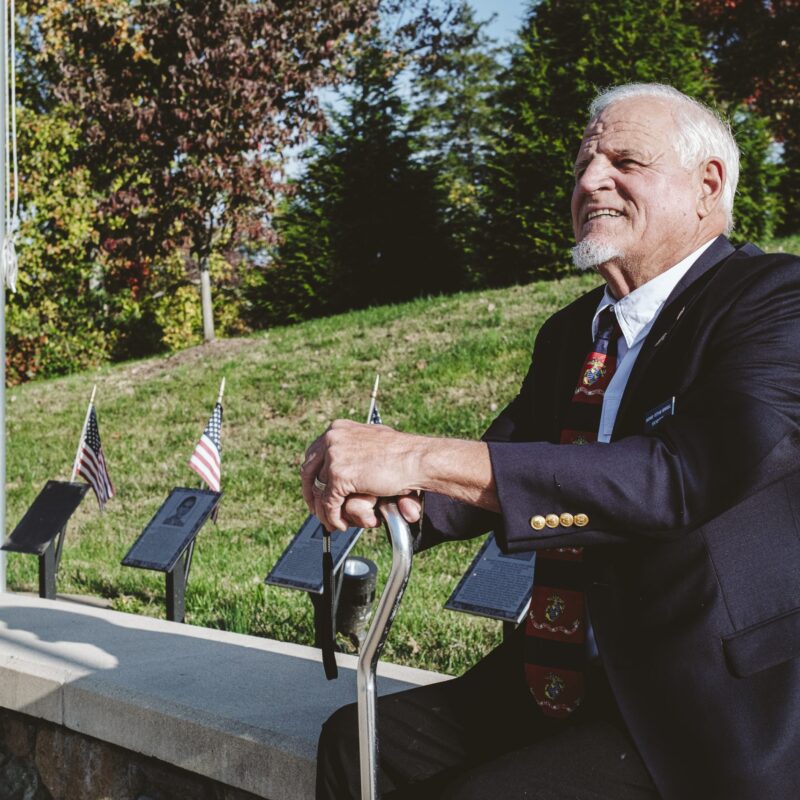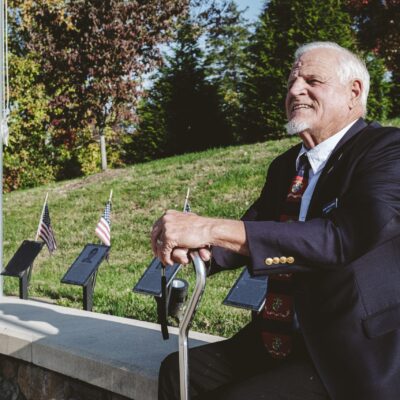|
READ MORE |
“Daddy, look what I made.”
“That’s beautiful. But you know what, the adults are trying to have a conversation right now. So can you go in the other room and draw until Mommy gets home?”
“O.K., Daddy.”
Five-year-old Alice trots back into the kitchen to color while I ask her father how he sees this moment in our nation’s history. Many people are in trouble with their mortgages, and public awareness of the environment is coming to a head. Given his life’s work in both affordable housing and sustainability, John Quale (QUAH-lee) has a ringside seat for both crises.
“I think it’s a really important moment in U.S. history,” Quale begins. “There’s a greater recognition among the general public that environmental issues are really, really important. Obviously, no one can ignore the economy right now, and no one can ignore the housing crisis, but—”
“Daddy?
“Yes, Alice?”
“What should I draw for my picture?”
“Um…how about a tree?”
Alice seriously considers this, then nods in approval and skips off to the kitchen.
“What was I saying? Oh. I really feel like there needs to be an overlap and a linkage between this issue of energy efficiency and affordable housing,” says Quale. “I don’t think there’s any way to separate them.”
How do you solve two big problems at once? For Quale, going green and saving dough go hand in hand. He doesn’t think sustainable housing should trickle down in the marketplace, beginning with those who can pay a premium for it; he wants to see green thinking integrated into low-cost housing, actually making it more affordable. I start to ask him if the economic crisis will wrench these plans, but I get interrupt—
“Do you want apples on the tree?”
“That’d be great, Alice. Birds, too.”

Saving the best for last: Design-Build-Evaluate, is what Quale calls his three-step process, and the third step is what makes his ecoMOD studio unique. |
Quale stays on course: “I think this [economic crisis] is a real opportunity. People have now begun to recognize that there is a very significant difference between those in the higher-income levels and those, the other 90 percent of us, in the lower-income levels. I mean it’s shocking when you look at the income disparity, just compared to 30 years ago. It’s much more significant, and it’s leading to this affordability crisis.”
The data bear out Quale’s descriptor “shocking.” In fact, a recent article in Newsweek highlights data from Citigroup showing that the net worth of the top 1 percent of U.S. households is greater than the combined total net worth of the bottom 90 percent. The data also reveal that over the past quarter century, almost 75 percent of all income gains have gone to the top 20 percent of taxpayers—a trend that Quale wants to see reversed.
But he’s not wielding a policy stick. Actually, he’s an architect. “I’m very committed to design with a capital D,” he says. “The discipline of architecture is not really a policy discipline; it’s a design discipline.”
Quale doesn’t just think about solving the energy and affordability crises; he designs solutions. According to him, good design alone can shrink the energy costs of a building by as much as 50 percent through factors like building orientation, sun angles, and window placement.
“That’s before you even get into technologies and expensive solutions that everyone thinks are so important.”
As an assistant professor at UVA’s School of Architecture, Quale is influencing a new generation of architects to implement sustainability and affordability in their careers as designers. It’s something they’ve learned firsthand as students in his Solar Decathlon and ecoMOD courses, classes that are having a direct impact on the local Charlottesville housing community. Quale’s ecoMOD students have already built two low-cost, energy-efficient, modular homes in Charlottesville (and one in Mississippi) using student design and labor from both the architecture and engineering schools. Now they’re working on a fourth, in partnership with Habitat for Humanity.
“Here you go, Daddy.”
“Wow, is that you picking an apple?”
“Actually, it’s a boy picking an apple.”
“It’s a boy? That’s very nice. But remember what I said about the adults having a conversation right now?”
This is Quale: patient, positive, and hopeful that crisis will mean opportunity—that people’s heightened awareness of economic and environmental woes will hasten his vision of lighter residential living. “I’m an optimist,” he says. “I think you have to be optimistic to be a designer.”
Optimism might be tough to sustain these days, but Quale the capital-D designer is attracting national notice as he fashions new ways to bring holistic, sustainable practices to the classroom. In doing so, he’s giving his students tools to change the way we think about housing in America.
In the studio with ecoMOD
The studio floor of the architecture school is controlled chaos. It’s where students put their book learning into practice and actually paint, build, and even grow things. Rows of desks piled high with cardboard models, newspaper clippings, pizza boxes, and Apple accessories create an atmosphere that’s jarring to an outsider, one who expects the work space to reflect the clean lines and coherence of the final products.
|
Two of Quale’s students work on ecoMOD1, a two-unit condo built from eight small modules in the Fifeville neighborhood. |
It’s 2 o’clock on a Monday afternoon, and Quale is gathering his ecoMOD students, about 15 grads and undergrads, in a rough circle at the start of their studio time. He’s an unimposing figure, monochromatically dressed in slate gray, the color of his slightly unkempt beard. Like the studio, his appearance—a bit careless, perhaps—challenges my notion of a highly successful designer. But a closer look reveals understated thoughtfulness in the details: a white leather wristwatch, striped socks.
Quale begins by reminding students that the design deadline for ecoMOD4, the fourth ecological, modular, and affordable house prototype, is just two weeks away. The class’ final presentation to a panel of professional reviewers will be “a big, awkward group thing,” he says. “Nothing to worry about.”
Some students look worried.
With the semester drawing to a close, last-minute changes to the plan for ecoMOD4 are causing these high achievers no small amount of anxiety.
Quale coolly takes their questions. Resting an oversized mug in his left palm, he reaches his right hand up to scratch the back of his head.
“John is incredibly laid back,” one student tells me. “Sometimes frustratingly laid back. He has more confidence in us than we do in ourselves.”
A girl raises her hand.
“Who’s in charge of making changes to the master plan?”
That would be the “keeper of the plan,” Quale tells her. A tall, lanky fellow proudly raises his hand as classmates gesture, “We’re not worthy.”
Like two of its predecessors, ecoMOD4 will be built in Charlottesville, specifically in the historic and transitional Ridge Street neighborhood. Habitat for Humanity is partnering in the build, so labor will inevitably be cheap. To cut costs, Quale’s students are trying to use less expensive materials, including reclaimed wood and steel, in their design, and, with only 900 square feet to work with, trying to make every inch of it count.
Today, the team discovers that the wall thickness will be 2.5” less than planned.
“That’s 60 extra square feet!”
This is good news. EcoMOD4 hasn’t exactly caught a lot of breaks. The building site is wracked with overgrown brush and a mosquito-infested berm, signaling a former dump site. It’s impossible to anticipate the exact depth of the debris.
Still, Quale is impressed with this particular team. “You’re into a level of design we didn’t quite achieve in other first semesters,” he tells them.
Come spring, students will start constructing prefabricated modules for the unit they’ve designed, laboring countless hours in a decommissioned airport owned by the University before assembling the house on-site. In order to keep it from looking like a shed for a larger home nearby, ecoMOD4 will be a narrow two stories, with modern angles and a sleek exterior.
The third phase of the project, and the one that makes it unique, is the evaluation period. Once the house is completed and occupied, students will spend an entire year studying its functionality, collecting data on everything from ventilation to heating and cooling to water usage.
“It’s an easy step to forget,” Quale cautions. “Not a lot of people out there take the time to carefully evaluate what they’ve built.”
Quale calls his three-step process Design-Build-Evaluate. The first two steps, Design-Build, comprise a model that’s increasingly popular with architects who want more of a hands-on role in the construction process. The third step, which Quale has built into the ecoMOD process from the beginning, gets a lot less lip service.
Roots of an ethic
In case you’ve missed the onslaught of shameless eco-ad spending by the likes of GM, Exxon and IBM, here’s a tip: Nowadays, it pays to be green—or, at least, to look like you are. The movement’s reverberating in the building industry, where prefab, modular homes and energy-efficient design are en vogue.
But these trends weren’t so hot in the early ’90s, when Quale was writing his graduate dissertation on sustainability. Or at the turn of the century, when he was pushing green design at top New York architecture firms, firms that weren’t yet speaking the language of carbon footprints and life cycle analysis.
Quale’s environmental ethos formed much earlier, during his young adult years in suburban Milwaukee. He credits, in part, the writings of Aldo Leopold, an American ecologist and an icon of the modern environmental movement, whose book A Sand County Almanac was penned in Quale’s home state:
A thing is right when it tends to preserve the integrity, stability, and beauty of the biotic community. It is wrong when it tends otherwise.
“It was a meaningful book for me,” he says, “not only because I was from Wisconsin and Sand County is right next to the town where my father grew up…but it really helped me define my idea of what a responsible citizen should do in the context of environmental issues.”
That, and traveling outside of his “white bread, suburban community,” impressed upon Quale a social conscience that stuck with him when he decided to enroll in architecture school at UVA.
“I knew when I arrived that absolutely I had to commit to social and environmental issues, and I felt that there were opportunities to address those issues in the design world,” he says.
But, let’s not forget, this was the ’90s. Most architecture students still saw only one shade of green: ka-ching.
“Green building was evolving at the time, but [architecture] was still very much caught up in an emphasis on making money…on high-end residential stuff.”
It turned out that Quale was the only architecture design student to emphasize sustainability in his studies, a move that “wasn’t exactly supported”—that is, until Quale won a national award with his thesis. “I think that helped.”
It also gave Quale the confidence to continue thinking about sustainable design, even when he was the one doing “high-end residential stuff.”
Several years later, working at a firm called Architecture Research Office in New York, Quale helped design a 10,000-square-foot vacation home being built on a “perfectly pristine mesa” outside Telluride, Colorado. The owners planned to occupy the house for only six weeks out of the year.
Quale says he’s pleased with how the project turned out aesthetically, but “it just felt like I needed to get back to why I initially wanted to get involved in architecture, which was to use design to serve others and to help people.”
For him, that meant returning to UVA for a temporary teaching post. Little did he know that he would soon be trading in that 10,000-square-foot vacation home for an 800-square-foot “Trojan Goat.”
A solar beginning
Ted Nelson remembers pulling some strange all-nighters as a graduate architecture student at UVA. In the fall of 2002, Nelson spent a week in D.C. frantically assembling an energy-efficient “home of the future” on the National Mall.
“We would work with big spotlights throughout the night in shifts, then go back to our hotel and try to find a place to sleep. Sometimes you’d wake up with people in the bed with you that you didn’t know would be there,” Nelson remembers.
Quale had arrived back at UVA ready to get his feet wet. It wasn’t long before he plunged into the first-ever Solar Decathlon, an energy-efficient house-building contest sponsored by the U.S. Department of Energy. Engineering Professor Paxton Marshall was looking for an A-school professor to join him in assembling an interdisciplinary team of students for the competition.
“I naively said yes,” Quale admits.
Quale soon found himself in unfamiliar territory, using a hands-on, collaborative teaching model that was novel at the time. He told his students, “I don’t know exactly what I’m doing here. But let’s work through this together.”
Self-assured yet humble, Quale succeeded in this approach largely because of his ability to get out of the spotlight. Adam Ruffin, a student project manager on Quale’s team, admires his ability to put students first.
“He’s totally different than a lot of people running Solar Decathlon teams. What he was really good at was making sure that we were all doing the talking. Pedagogically, he understood that this was for us.”
“Trojan Goat,” as UVA’s solar house was affectionately known, placed well in the competition, finishing first in architectural design and second overall. Named “most progressive-thinking house,” its unusual structure was truly experimental.
“People would say, ‘It’s really cool, but I’d never want to live in a house like this,’” says Nelson.
The Decathlon gave Quale a chance to develop his skills in collaborative teaching and construction, but it didn’t quite meet his expectations in terms of providing realistic, affordable solutions to sustainable housing. The Department of Energy was strictly focused on efficiency, but for Quale, it needed to be about design.
He explains: “Yeah, you can throw a bunch of photovoltaic (solar) panels on a roof, and yeah, you can make it carbon neutral if you do enough of them, but if you haven’t actually designed the building in a way to minimize the energy usage in the first place, you’re basically wasting your money.”
So, in true visionary fashion, Quale changed the rules. He took the Solar Decathlon model, made it affordable and local, and focused the process on design. In short, he created ecoMOD. This time it was Quale who convinced Marshall to partner with him.
Since its inception, ecoMOD has won numerous awards, and Quale has picked up several teaching accolades.
“The best measure of John’s success is the large number of students who have credited their jobs and career successes, as well as their abiding commitment to designing a more sustainable world, to their experiences in John’s classes,” says Marshall.
Nelson is one of those students. With Quale’s help, he and fellow Decathlon classmate Ben Dagitz started a local architecture firm called Design Build Office. Its first project was renovating Quale’s future home in Cobham.
According to Nelson, “if it wasn’t for people like [Quale] pushing the envelope, giving talks at the community center, and spreading awareness, Charlottesville wouldn’t be as green as it is. I think he’s had a pretty dramatic effect on the school and consequentially on the community.”
Especially since many of Quale’s students never leave Charlottesville after graduate school.
“It’s a velvet rut,” says Nelson. “You know, you get stuck here, but it’s not so bad.”
When Quale returned to Charlottesville, it was only for a temporary teaching post. Eight years later, his innovative classes are attracting national attention, the green-building and affordable-housing issues have taken center stage, and Quale feels like he’s just hitting his stride.
The challenge around here
“Mommy’s home!” cries Alice, scurrying to the kitchen.
Sara Osborne, Quale’s wife, walks in with their 7-year-old son, Walker, after a late-running talent show practice. Walker’s talent: cup stacking.
“I messed up the first time,” he tells us, wide-eyed.
Sara was flustered by one of his classmate’s “expert hula-hooping.”
“It has me worried. Like we’re already behind,” she laughs.
Quale and Osborne, a landscape architect, live in a renovated country store and post office in Cobham, a 25-minute drive from town. Call it an unsustainable pleasure—“We try to carpool as much as we can”—but they enjoy the country life.
“We really like the ability to have chickens, and a garden, and feel like the kids can go outside and not be too worried about that. Plus, we couldn’t afford a home in the city when we first moved here,” Quale admits.
It’s a dilemma Quale and Osborne share with many other folks in Charlottesville. There’s a lack of townhouses and stand-alone homes in the $125,000-$150,000 range, says Peter Loach of the Piedmont Housing Authority, “and people don’t move to Charlottesville to live in a condo.” So they’re forced to live outside town and commute to work everyday.
Quale’s house, a blend of modern and traditional elements, mirrors the tension he feels between possibility and reality. “There’s a constant battle about how to lead your life in an ethical way and how to be practical at the same time,” says Quale, confessing that he took a staunch but fleeting stance against plastic toys after his children were born.
Quale may have to bow to the pragmatic at times, but at heart he’s a visionary. He’s constantly dreaming up ways to push energy-efficient, modular housing through affordable housing channels. Perhaps, he says, an ecoMOD design will be replicated and mass-marketed through a modular builder, or be used as part of UVA’s economic development program. There’s even talk of taking ecoMOD abroad to build modular “wet units” in Jamaica, where structurally sound kitchens and bathrooms are lacking.
“From my point of view, we are just getting to the point where we’re recognizing where that sweet spot is,” he says, “where [sustainability, affordability and modularity] overlap, and I really don’t want to miss out on the opportunity to leverage that knowledge.”
But, he admits, “there’s never an easy solution.”
Prefab homes have a long history of failure, mostly due to architects’ designs proving impractical for buyers and builders. Then there’s the fact that just recently, the lower unit of ecoMOD1, a two-unit condo on 7 1/2 Street in Charlottesville, went into foreclosure.
“Obviously, it is very disappointing to have one of the five housing units within the ecoMOD project now available only as a market rate unit (even if it is the one the students didn’t design—other than the floor plan),” Quale says. “The situation highlights how close to the edge so many people are in this economic downturn.”
Indeed, a recent UVA study found that 269 households in Charlottesville and Albemarle were either in foreclosure or three months behind on their mortgage payments. Groups like the Piedmont Housing Alliance are scrambling to help them stay in their homes. One might think grim determination, not optimism, would be the appropriate response.
But it actually makes Quale all the more hopeful that energy-efficient housing can positively impact those who most need it, the sector of the population for whom energy costs are a large percentage of their budget.
“The real vision is to have a broader impact” on this population, he says, by designing practical solutions that can succeed in the marketplace and change what affordable housing looks like. “On some level, it’s still about optimism. It’s about reinventing the world.”

